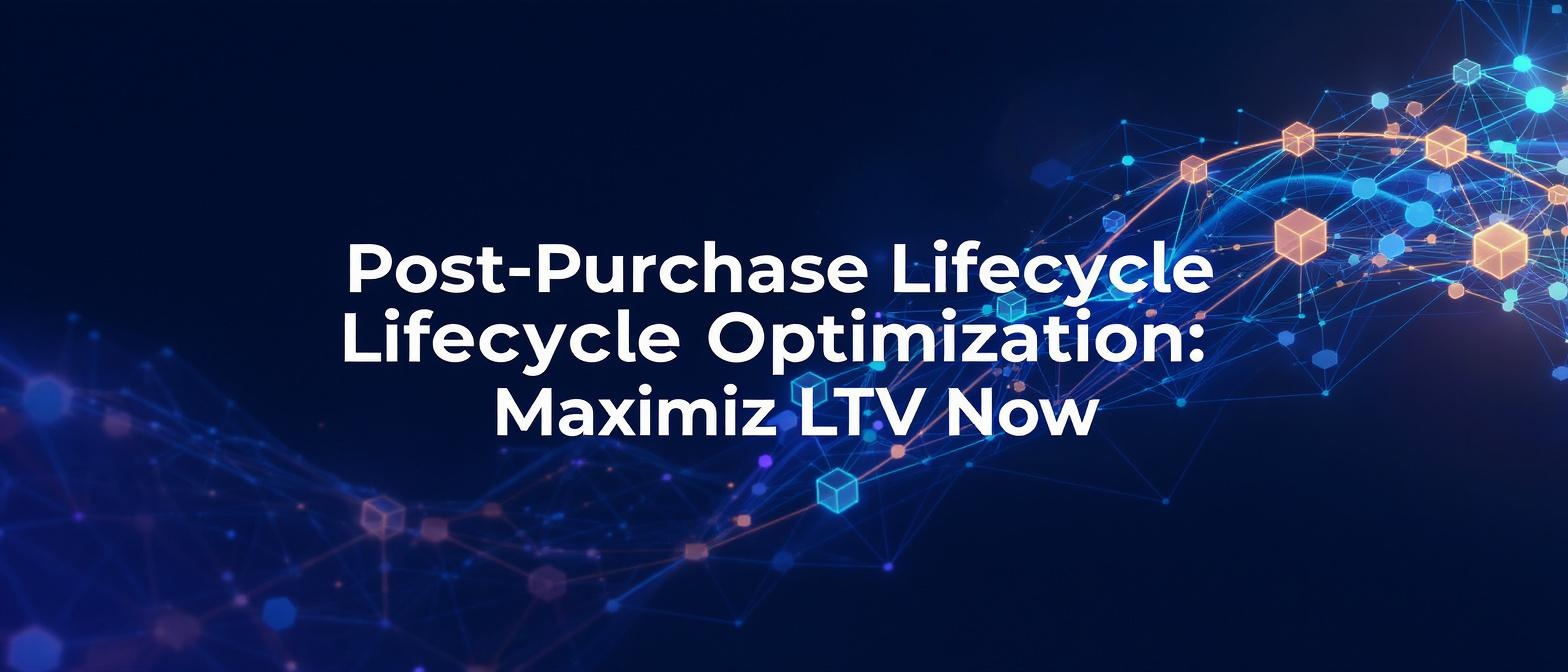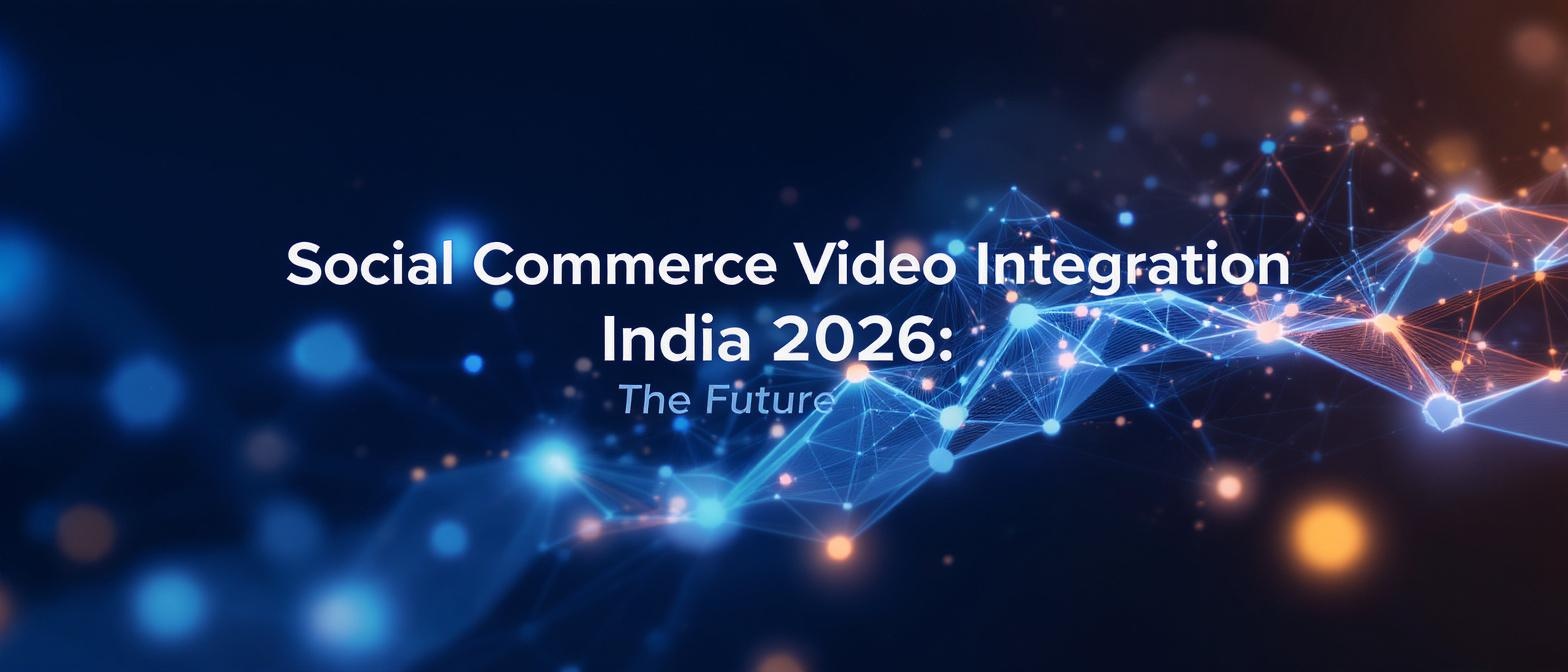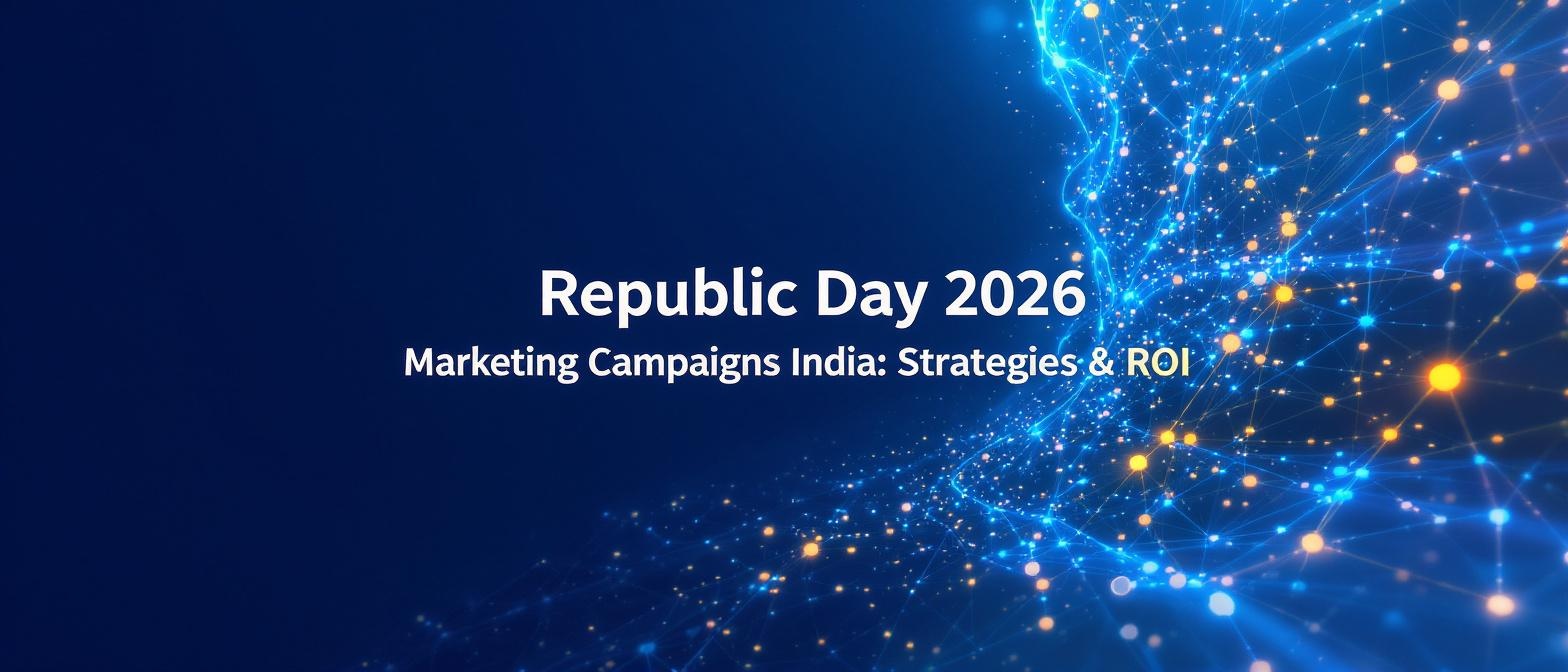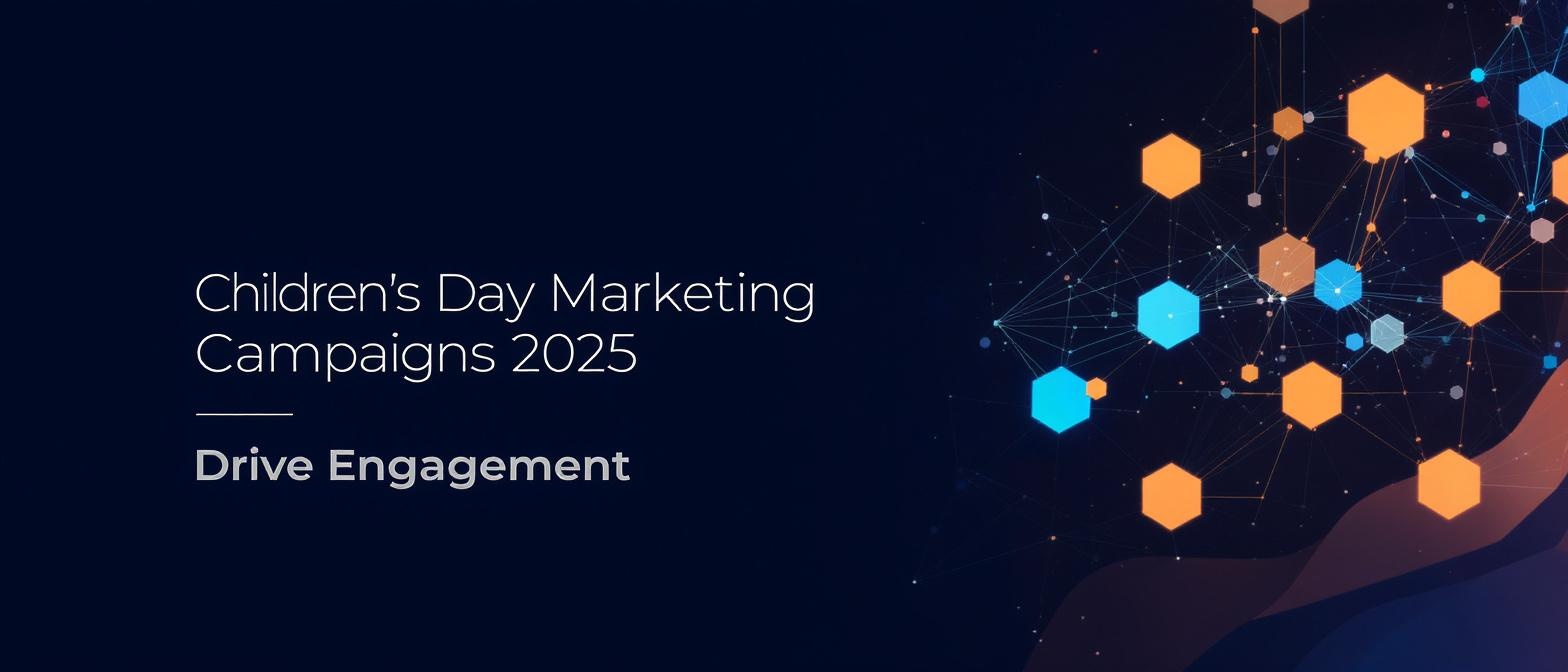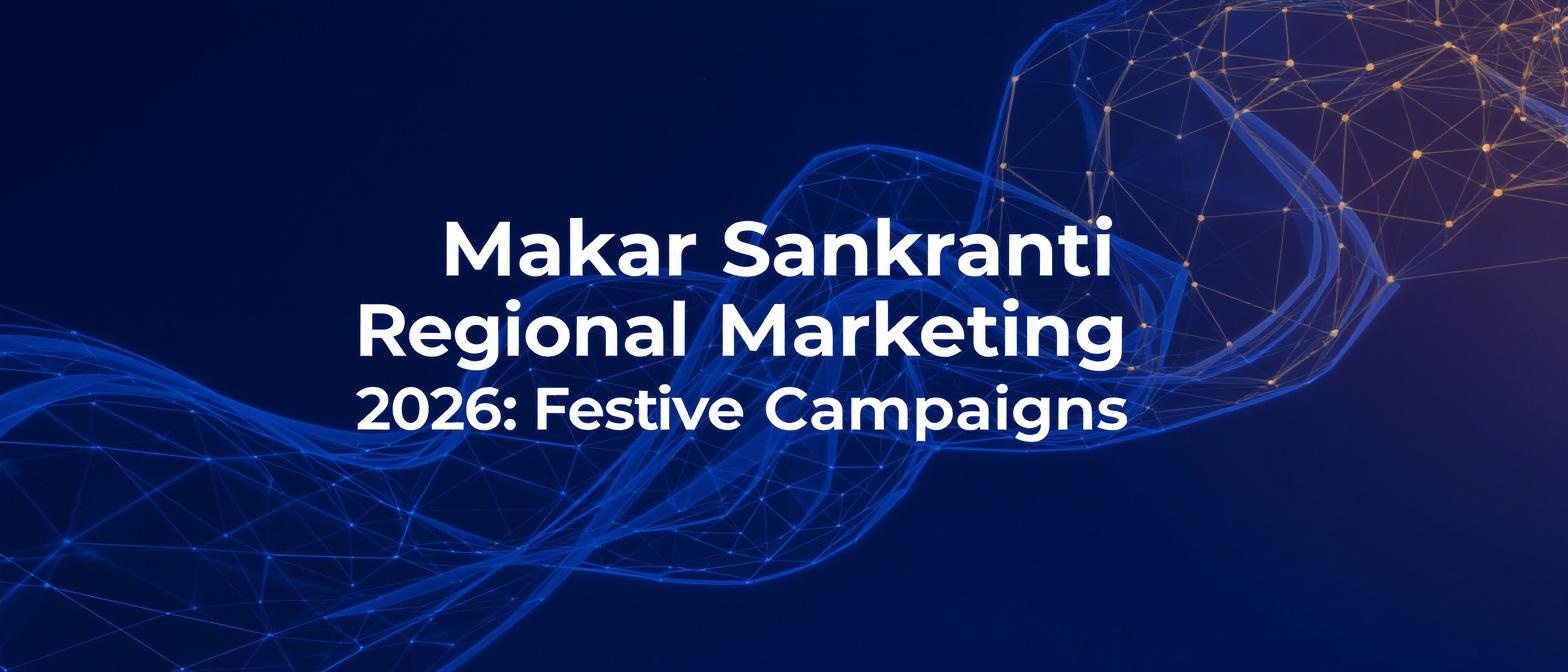Post-Purchase Customer Lifecycle Optimization: Maximizing LTV with Predictive Video Trigger Automation
Key Takeaways
- Focusing on post-purchase optimization can significantly increase retention and Customer Lifetime Value.
- Implementing predictive video trigger automation delivers hyper-personalized experiences at the right time.
- Harnessing data-driven insights helps identify churn risks and drive proactive engagement.
- Seamless integrations and real-time triggers enable immediate and contextually relevant customer outreach.
- A well-executed post-purchase strategy leads to long-term loyalty and sustainable revenue growth.
In the relentless race for customer acquisition, enterprises often overlook the goldmine in their backyard: existing customers. The real battle for sustainable growth isn't just about winning new business; it's about retaining and expanding it. This is the core of post-purchase customer lifecycle optimization, a strategic imperative for maximizing customer lifetime value (LTV) and building unshakeable brand loyalty.
While acquiring a new customer can be five times more expensive than retaining an existing one, the post-purchase journey remains a largely untapped frontier. But the landscape is shifting. In the competitive Indian e-commerce market, forward-thinking brands are projected to increase their post-purchase engagement spend by over 20% in 2025 just to combat churn. The focus is no longer on the transaction, but on the relationship.
This guide dives deep into the future of customer retention: using predictive video trigger automation to transform the post-purchase experience from a series of generic touchpoints into a hyper-personalized, value-driven conversation that boosts LTV and turns customers into lifelong advocates.
Section 1: Introduction to Post-Purchase Customer Lifecycle Optimization
Post-purchase customer lifecycle optimization is the strategic orchestration of every touchpoint after a customer makes a purchase. The goal is to proactively guide them through a journey that encourages repeat business, drives upsells and cross-sells, generates referrals, and secures positive reviews. It’s a fundamental shift from a transactional mindset to a relational one.
This phase is mission-critical for one simple reason: it directly fuels Customer Lifetime Value (LTV). By focusing on post-purchase engagement automation, businesses move beyond the costly, revolving door of acquisition and instead build a stable, predictable revenue stream from a loyal customer base. A 5% increase in customer retention can increase profitability by 25% to 95%, making this the most powerful lever for sustainable growth.
The modern customer lifecycle includes several key post-purchase stages:
- Onboarding & Adoption: Ensuring the customer understands and gets immediate value from their purchase.
- Engagement & Retention: Keeping the brand top-of-mind through relevant communication and value-added content.
- Expansion & Upsell: Identifying opportunities to introduce customers to higher-value products or complementary services.
- Advocacy: Delighting customers to the point where they become organic brand ambassadors, leaving reviews and referring new business.
Optimizing these stages requires a sophisticated, data-driven approach that anticipates customer needs and delivers personalized experiences at scale.
Source: www.zendesk.com
Source: www.nextiva.com
Source: dovetail.com
Section 2: What is Predictive Video Trigger Automation?
Predictive video trigger automation represents the pinnacle of personalized marketing. It is the practice of using customer data, behavioral signals, and predictive analytics to automatically generate and deliver hyper-personalized video messages at the most impactful moments in the customer lifecycle.
At a technical level, the system works by ingesting real-time data feeds and events from a CRM, analytics platform, or Customer Data Platform (CDP). These events—such as a specific purchase, a period of inactivity, or a rising churn-risk score—act as triggers. Once a trigger condition is met, the system makes an API call to a generative AI video platform, passing along personalization data to create a unique video on the fly.
This video can be personalized with the customer's name, their recent purchase details, a tailored offer, or any other relevant data point. The result is a one-to-one communication that feels personal, timely, and incredibly relevant.
Examples of common triggers include:
- Upsell & Cross-Sell Video Triggers: When a customer buys a camera, a video is automatically sent a week later showcasing compatible lenses and accessories.
- Predictive Churn Prevention Videos: If a subscription user's engagement drops below a certain threshold, a personalized video is triggered to highlight unused features or offer a loyalty discount.
- Replenishment Reminder Video Automation: For a customer who purchased a 30-day supply of vitamins, a video reminder is automatically sent on day 25, making reordering seamless.
The impact of this technology is staggering. According to 2025 market analysis, generative AI video personalization can lift e-commerce conversions by up to 30% and increase add-to-cart rates by 25%, proving that relevance drives revenue.
Source: www.shopify.com
Source: netcorecloud.com
Section 3: Enterprise Integration & Architecture for Scalable Video Personalization
Deploying predictive video automation at an enterprise scale—where millions of unique videos may be needed in a single day—requires a robust, secure, and lightning-fast architecture. This is where API-driven generative AI platforms become essential.
An enterprise-grade solution is built around a powerful API that integrates seamlessly with existing marketing technology stacks, including CRMs (like Salesforce), marketing automation platforms (like Marketo), and messaging services (like WhatsApp Business API).
The typical integration pipeline follows a clear sequence:
- Trigger Event: A predefined event occurs in the source system (e.g., a customer joins a loyalty tier in the CRM).
- API Call: The source system makes a
POSTrequest to the video generation API, sending a JSON payload with dynamic personalization parameters. - Real-Time Video Generation: The platform generates a unique video in seconds, dynamically inserting the provided text and image data.
- Webhook & Delivery: Once rendering is complete, a real-time webhook sends the final video URL back to the client’s system for immediate delivery via email, push notification, or WhatsApp.
A sample JSON payload might look like this:
{
"vendor_id": 123,
"order_id": "CUST-5678-ORDER-1",
"template_id": "TMPL-Loyalty-Upgrade",
"text_data": {
"p1_text": "Arjun",
"p2_text": "Gold Tier"
},
"image_data": {
"p1_image": "https://brand.com/images/gold-tier-badge.png"
},
"meta_data": {
"callback_url": "https://mybrand.com/webhook/video-ready"
}
}
A game-changing feature in this space is the concept of virtual reshoots. Advanced AI allows marketers to alter the script, offers, or messaging within a video by changing the celebrity or spokesperson's lip sync and voice without needing a new physical shoot. This provides unprecedented agility for A/B testing and campaign iteration, saving thousands of hours in production time.
Section 4: The Transformative Benefits of Lifecycle Marketing Video Personalization
Integrating personalized video across the post-purchase journey creates more meaningful customer lifecycle video touchpoints, deepening the emotional connection with the brand and driving tangible business results. Platforms like TrueFan AI enable enterprises to execute these sophisticated strategies at scale, turning every communication into a memorable experience.
Here are key examples of high-impact video touchpoints and their purposes:
- Personalized Onboarding & Tutorial Videos: Immediately after a purchase, a video featuring the customer’s name and specific product can reduce buyer’s remorse by guiding them through setup or highlighting key features. This ensures they derive value from day one.
- Milestone Celebration Videos: Automating personalized videos for birthdays, anniversaries, or loyalty program anniversaries fosters a strong emotional bond. A simple, heartfelt message can make a customer feel seen and valued beyond their transactional history.
- Subscription Lifecycle Video Optimization: For subscription-based businesses, dynamically timed renewal reminder videos are far more effective than plain text emails. These videos can summarize the value received over the subscription period and offer a personalized incentive to renew.
- Replenishment Reminder Video Automation: For CPG and e-commerce brands, videos that remind customers to reorder consumable products can automate repeat purchases. Timing these reminders based on predictive consumption cycles ensures the message is sent at the exact moment of need.
The data confirms the superiority of this approach. Personalized videos have been shown to achieve 3 times higher engagement than static emails. In a real-world example, travel giant Goibibo saw a 17% higher read-rate on WhatsApp when retargeting messages included a personalized video, demonstrating the power of post-purchase retention automation.
Source: www.andava.com
Section 5: Using Predictive Analytics to Power Customer Success Videos
The most advanced organizations are moving from reactive to proactive retention strategies. By leveraging predictive analytics and churn-risk models, they can identify at-risk customers before they disengage and intervene with targeted, helpful content. This is where predictive customer success videos come into play.
These models analyze thousands of data points—usage patterns, support ticket history, purchase frequency, and behavioral signals—to assign a churn-risk score to each customer. When a score crosses a critical threshold, it can trigger a proactive success video designed to address potential pain points or highlight underutilized features that could increase their product adoption.
For example, if a SaaS user hasn't engaged with a key feature after 30 days, a video could be sent showing them exactly how to use it to achieve their goals. This demonstrates proactive support and course-corrects the customer's journey toward success.
Case Study: Zomato's "Maa ke liye" Campaign
Food delivery leader Zomato executed one of the largest predictive video campaigns ever. For Mother's Day, they delivered 354,000 unique, personalized videos featuring Bollywood celebrities in a single day. Each video addressed the user's mother by name, creating a deeply emotional moment that drove record order volumes and massive social media buzz. This campaign showcased how customer lifetime value video campaigns can build brand love at an unprecedented scale.
Solutions like TrueFan AI demonstrate ROI through tangible metrics, such as the telecom client who achieved a 50% reduction in churn after deploying predictive churn prevention videos to at-risk customer segments.
Section 6: Driving Action with Behavioral Trigger Video Campaigns
While predictive models look at long-term patterns, behavioral trigger video campaigns react to specific, real-time customer actions (or inactions). This allows for immediate, contextually relevant interventions that guide the customer toward a desired outcome.
These campaigns rely on fine-grained, behavior-driven segmentation. Common use cases include:
- Cart & Browse Abandonment Videos: If a logged-in user leaves items in their cart or browses a product category without purchasing, a video can be triggered within minutes to their preferred channel (like WhatsApp), reminding them of the item and perhaps offering a small incentive to complete the purchase.
- Reactivation Videos for Dormant Users: A video can be automatically sent to a subscriber who has been inactive for a set period (e.g., 30 days), showcasing what's new or presenting a special "welcome back" offer.
- Upsell & Cross-Sell Video Triggers: When a customer's purchase frequency or average basket value crosses a certain threshold, it can trigger a video introducing them to a premium product line or a complementary service, capitalizing on their high engagement.
- Milestone Celebration Videos for Loyalty Tiers: A personalized video congratulating a customer on reaching a new loyalty tier (e.g., Silver to Gold) makes the achievement feel significant and reinforces their continued engagement.
From a technical standpoint, these campaigns require tight integration with real-time analytics platforms. Events must be captured and pushed via webhooks or message queues to the video generation API, enabling the entire trigger-to-delivery cycle to complete in under 30 seconds for maximum relevance.
Section 7: Enterprise Features Enabling Global Scale and Compliance
Executing lifecycle marketing video personalization for a global audience introduces complexities around language, latency, and compliance. Enterprise-grade platforms are built with specific features to address these challenges head-on.
Key features for global scale include:
- Multilingual Localization: The ability to auto-translate and re-synthesize a video's voice and lip-sync into different languages is crucial. TrueFan AI's 175+ language support and Personalised Celebrity Videos allow global brands to deliver a consistent, localized experience in every market without shooting hundreds of versions of the same ad.
- Low-Latency, Real-Time Personalization: For dynamic channels like in-app messages or interactive digital signage, videos must be generated and delivered in near real-time. A low-latency architecture ensures the customer journey is seamless and impactful.
- Advanced Analytics & Optimization Dashboards: A robust analytics suite is essential for measuring success. Enterprises need to track engagement metrics, watch-through rates, conversion lift, and A/B test results to continuously optimize their customer journey predictive analytics.
- Compliance & Security Guardrails: Operating at scale requires ironclad compliance. This includes a consent-first model for data usage, built-in content moderation filters to block unapproved text, and adherence to security standards like ISO 27001 and SOC 2.
These features ensure that brands can scale their customer journey optimization videos globally while maintaining brand consistency, security, and local relevance.
Section 8: Common Challenges and Best Practices
While incredibly powerful, implementing a post-purchase engagement automation strategy at scale comes with its own set of challenges. Awareness of these hurdles is the first step to overcoming them.
Common Challenges:
- Data Privacy & Compliance: Handling personal data for personalization requires strict adherence to regulations like GDPR and CCPA.
- Maintaining Brand Consistency: Ensuring a consistent brand voice and visual identity across thousands of video variations and languages can be difficult.
- Evolving Customer Preferences: What delights a customer today may not work tomorrow. Strategies must be agile and adaptable.
- Data Silos: Fragmented customer data across different platforms prevents a unified view of the customer, making it impossible to trigger the right message at the right time.
Best Practices for Success:
- Centralize Customer Data: Implement a Customer Data Platform (CDP) to create a single, unified profile for each customer. This ensures triggers are based on a complete and accurate picture of their behavior.
- Conduct Continuous A/B Testing: Always be testing. Experiment with different scripts, personalization elements (e.g., name vs. last purchase), and delivery times to optimize campaign performance.
- Update Personas Quarterly: Regularly review behavioral analytics to update and refine customer personas. This ensures your messaging remains relevant to their current needs and motivations.
- Align KPIs with Business Objectives: For each video campaign, define clear KPIs—be it reducing churn, increasing repeat purchase rate, or lifting LTV—and ensure they align directly with overarching business goals.
Platforms with built-in compliance frameworks like ISO/SOC 2, integrated moderation engines, and consultative support can significantly mitigate the complexity of implementing post-purchase retention automation.
Section 9: Conclusion & Call-to-Action
The era of one-size-fits-all marketing is over. The future of customer retention lies in creating scalable, one-to-one experiences that make customers feel uniquely valued. Post-purchase customer lifecycle optimization, powered by predictive video trigger automation, is no longer a futuristic concept—it is the definitive strategy for boosting LTV, deepening loyalty, and reducing churn in today's competitive landscape.
By transforming the post-purchase journey from a monologue into a personalized dialogue, brands can build relationships that last a lifetime. The technology to deliver millions of unique, emotionally resonant video messages is here, enabling you to speak to every customer as an individual.
Ready to future-proof your customer engagement strategy? Explore TrueFan’s API-driven predictive video trigger automation for your enterprise. Request a Demo Today
Frequently Asked Questions
What is the primary benefit of post-purchase optimization over acquisition marketing?
The primary benefit is a significantly higher ROI. It is 5-25 times more expensive to acquire a new customer than to retain an existing one. By focusing on post-purchase optimization, you increase Customer Lifetime Value (LTV) and build a more stable, profitable customer base.
What kind of data is needed for predictive video trigger automation?
Effective automation relies on a combination of data sources: demographic data (name, location), transactional data (purchase history, order value), and behavioral data (website clicks, app usage, email engagement). The richer the data, the more personalized and effective the video triggers will be.
How quickly can a personalized video be generated and delivered?
Enterprise-grade platforms can generate and deliver a personalized video in under 30 seconds from the moment a trigger event occurs. This low latency is critical for real-time use cases like responding to cart abandonment or in-app actions.
Can this technology be used for internal communications?
Absolutely. Many enterprises use personalized video automation for internal purposes, such as creating customized training videos for new hires, sending personalized recognition videos from the CEO to top-performing employees, or creating motivational sales content.
How does a platform like TrueFan AI ensure brand safety with user-generated text?
Solutions like TrueFan AI have built-in content moderation engines that automatically scan any user-provided text before it's rendered into a video. These filters block profane, political, or discriminatory content, ensuring all generated videos align with brand safety guidelines and protect the integrity of the celebrity or brand spokesperson.

